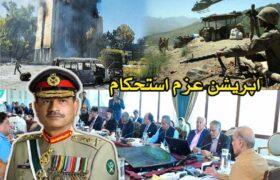Combating violent extremism among youth and its subsequent path towards terrorism is among the core challenges for Pakistan in modern times when the line between a civilian and a trained combatant has been eliminated. Pakistan has been fighting an ideological driven high intensity insurgency in KPK and ex-FATA region along with ethnically motivated low intensity conflict in Baluchistan for more than 2 decades now. Factors like Afghan turmoil and poor governance by governments led to rise of violent extremist tendencies. These were further exploited by militant outfits like Al Qaeda, TTP and BLA through indoctrination using twisted interpretations of religious scriptures and lack of development by governments.
The phenomenon of globalization and the advent of advanced information and communication technologies (ICT) played the role of catalyst making the recruitments for militant and terrorist outfits a quick and easy process. These changes ushered a new generation of conflict/warfare where Non-state actors are equally as important as state actors are if not more. Human minds became the battlefields of these conflicts and weaponization of ideas emerged as a winning strategy. Smaller groups like terrorist outfits have adopted advanced radicalization techniques to hunt energetic young bodies and minds to use them as foot soldiers to further their causes be it religious, sectarian, or ethnic.
The search for a sense of belonging, purpose, and/or identity are vulnerabilities of the younger lot where such radical and terrorist groups plant violent ideas in young minds to convert them into vehicles of violent extremism and terrorist radicalization to further hunt more such vulnerable minds. Some of these minds are radicalized to an extent that they are willing become the tools of suicide terrorism.
In developing countries like Pakistan, the situation is often compounded because of the inabilities to adapt to new paradigms to fight such complex problems and relying on old and simpler law and order tactics. Negative perceptions of state authorities, especially of the police and security forces which are perceived to belong to or support ‘the other’ are sowed in young minds by terrorist and militant organizations. One prime example of such tactics is PTM and its use of social media to malign security forces.
Pakistan has been fighting such menace on various ideological, ethnic, and sectarian dimensions for many decades now. There have been successes inactive, kinetic arms of such organizations but the state hitherto remains unsuccessful in uprooting this challenge of weaponized ideas and indoctrination of young minds with such ideas. But Pakistan is not the only state fighting against this challenge.
Global experts including the UN have realized this challenge of youth tilting towards violent extremism in its overall strategy against terrorism and have declared “youth engagement” as a remedy. UNSC has taken this issue of youth engagement for combating violent extremism and subsequent lead to terrorism on its agenda since 2015.
There are different reasons for violent extremism and terrorist ideals for youth. Sometimes it’s based on social bonding rather than ideological grounds while in some other incidents socio-economic deprivation and political oppression are leading causes.
Pakistan army with the help of government, have initiated multiple youth engagement programs including de-radicalization programs. Consistent efforts and political ownership of these programs have yielded visible positive results in all the merged districts of KPK and a change is visible as now local youth is being engaged in meaningful activities and there is a sense of ownership in them. Through various institutions established in previously restive areas, young minds are finding new opportunities to showcase their talents and skillsets taught to them in these newly developed educational and skill enhancement centers. There is a need to replicate these success stories to the other restive areas of the country like Baluchistan where some districts in the southern part of the province are in the grip of violent incidents.
Below are some practical suggestions for building an inclusive youth engagement strategy.
- Allow Youth to express themselves
It’s always a better strategy to let the youth express their dissent in a controlled environment and the state must arrange platforms that allow youth to do that their dissent must be respected and must be answered logically with facts. Peaceful expression and freedom must not be considered crimes per se. Instead of allowing the foreign ethnic fascist proxies to hijack these youth, the State can provide them such platforms where they can express, narrate and lament about their genuine grievances.
- Arts and Sports
Arts and sports initiatives provide a forum where youth can raise issues and formulate their grievances in a friendly environment. But for them to yield desired results, they must be part of a strategy containing all the steps mentioned above. If implemented in isolation, these engagement initiatives will not work in uprooting the challenge of preventing violent ideas to reach young minds. Particular parameters are required when designing and implementing these activities to ensure their success like these activities must not be alien to local youth in a particular area, there must be no language barrier, the environment of such activities must be of cooperation giving a sense of accomplishment to all participants. The ‘Working on Mindset’ approach must be adopted rather than making participants more time in such activities because that can be counter-productive if the participants get an idea of wastage of their time. Connecting prevention and intervention through initiatives involving former violent extremists has proven to have a greater impact on youth.
- Internet Monitoring
Internet is the most commonly used tool of recruitment and propagation of extremist ideologies by hostile groups and states. Its monitoring and subsequently free access by youth must be ensured.
In summary, a holistic youth engagement strategy for the prevention of violent extremism demands to put an emphasis on preventive measures rather than focusing on repressive measures only to get the desired outcome. To effectively address the drivers of violent extremism and promote peace, youth must be engaged as partners in the design and implementation of relevant programs and policies.




